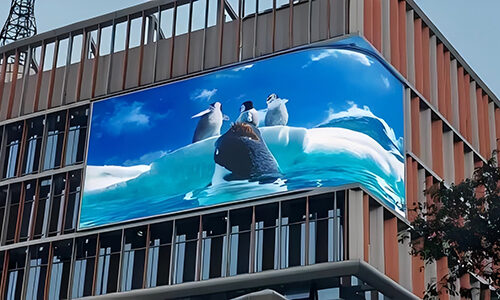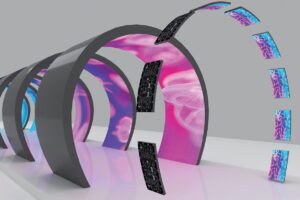Why Do Full-color LED Displays Need Video Processors?
In today’s society, full-color LED displays have become an important medium for indoor and outdoor advertising. Whether it is outdoor rental displays, shopping malls, stations, or stadiums, we can see various forms of full-color LED displays. However, in the face of such a diversified and ever-increasing market, how to provide high-quality visual effects for LED displays has become a difficult problem for people in the advertising industry. To solve this problem, the use of video processors has become an indispensable choice.
High-definition full-color LED display
A video processor is a device that can optimize, correct, and enhance the image signal output by the display. Its existence is mainly to solve some problems that occur when the LED display plays videos.
First, the video processor adjusts brightness, contrast, saturation, and other image aspects to enhance vividness and depth. Next, with its high-definition processing function, the video processor effectively improves image clarity and detail, eliminating blur and graininess caused by limited LED display pixels. Additionally, the video processor automatically detects and reduces noise, removing unwanted interference for a cleaner image. This ensures the audience enjoys the content with greater focus.
The video processor plays a crucial role in visual effects and video playback. Firstly, it enables image segmentation, dividing a complete video signal into multiple parts. This allows the signal to be output separately, adapting to various LED screen sizes and shapes. Secondly, the processor adjusts the frame rate in real time, ensuring smooth playback while preventing freezes and asynchronism. Additionally, it supports decoding and playback of multiple video formats, offering users a wider range of options.
Moreover, full-color LED screens are often used outdoors, so the video processor must offer strong anti-interference and adaptability. For instance, it can automatically adjust brightness and contrast to optimize display quality under varying light conditions. Additionally, the video processor features waterproof, dustproof, and anti-static functions, ensuring equipment stability and extending its lifespan.
Why do full-color LED screens use video processors?
A video processor enhances the screen’s visual effect, making images more vivid and clear while solving video playback issues. It goes beyond being a simple device—it acts as a picture optimizer, offering greater creative freedom and expression in the advertising industry. Whether for indoor or outdoor advertising, in shopping malls or stadiums, using a video processor is an essential choice that cannot be overlooked.









Leave a reply